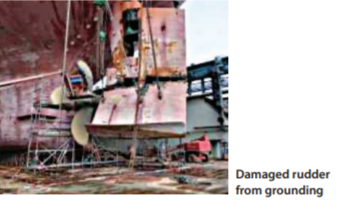202059 Storm anchorage grounding
A 225 metre bulk carrier in ballast was at deep water anchorage near a major port. It had drafts forward and aft of 4.80 metres and 6.05 metres respectively. The weather was good but heavy winds were predicted. The crew had put out seven shackles of port anchor. The weather forecast was expected to worsen, so the Master decided to drop the starboard anchor as well, with four shackles in the water.
Some time later the wind reached B10/11. Crew were using the main engine to try and keep the vessel on station but they were dragging anchor nonetheless. Shore authorities were advised and tug assistance was requested. Although the tug arrived soon afterwards the Master deferred immediate assistance. The tug remained in standby mode for the next seven hours as the vessel drifted, coming ever closer to a lee shore. Finally, an attempt by the tug to pull the vessel away from shore failed with the rupture of the tow line and the vessel grounded.

Lessons learned
- Time and again groundings from storm anchorages occur because too much time was lost before lifting anchor and putting to the open sea.
- Good seamanship means, among other things, putting the safety of the ship and crew before all other considerations.
- A vessel in ballast condition should be ballasted to its maximum before bad weather is encountered to reduce pounding and augment steerage.
